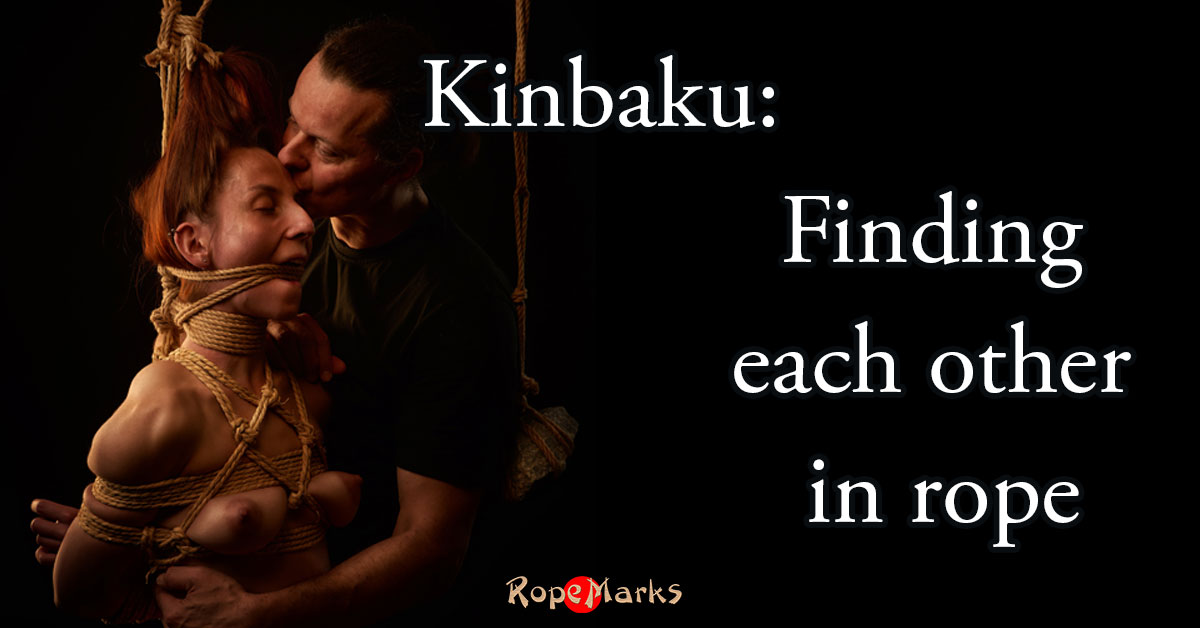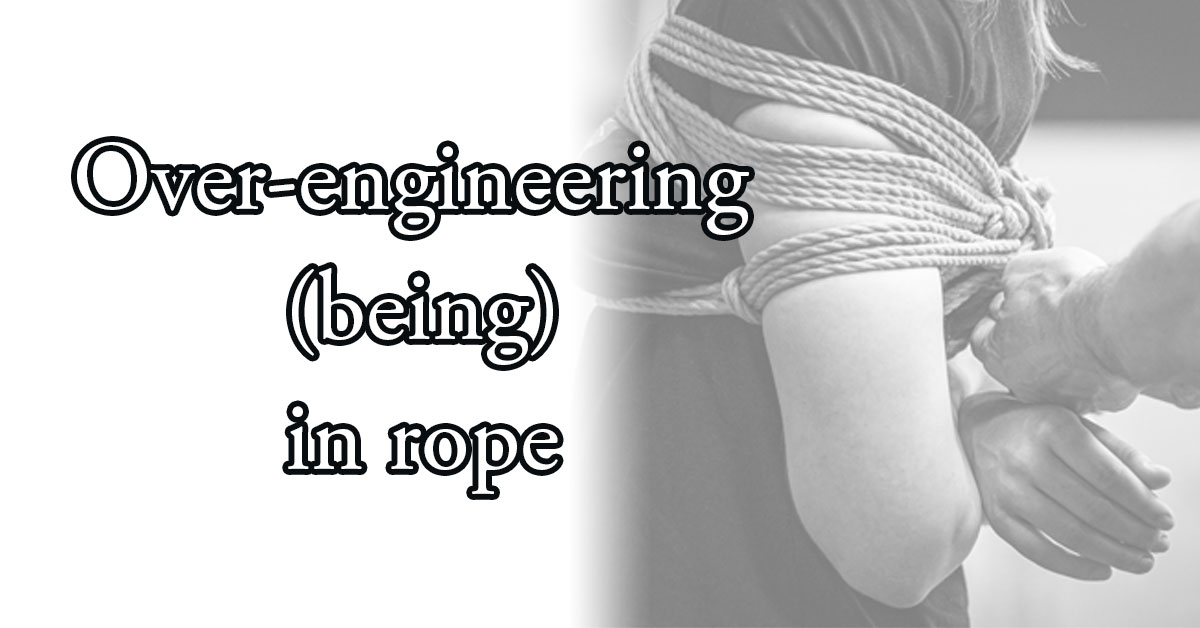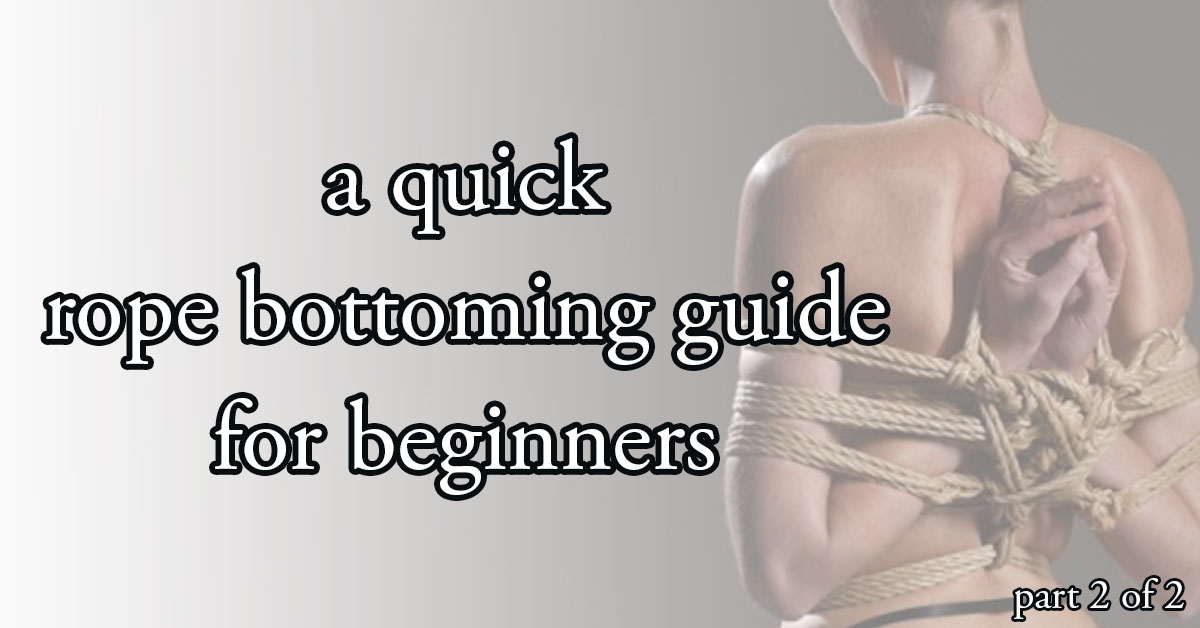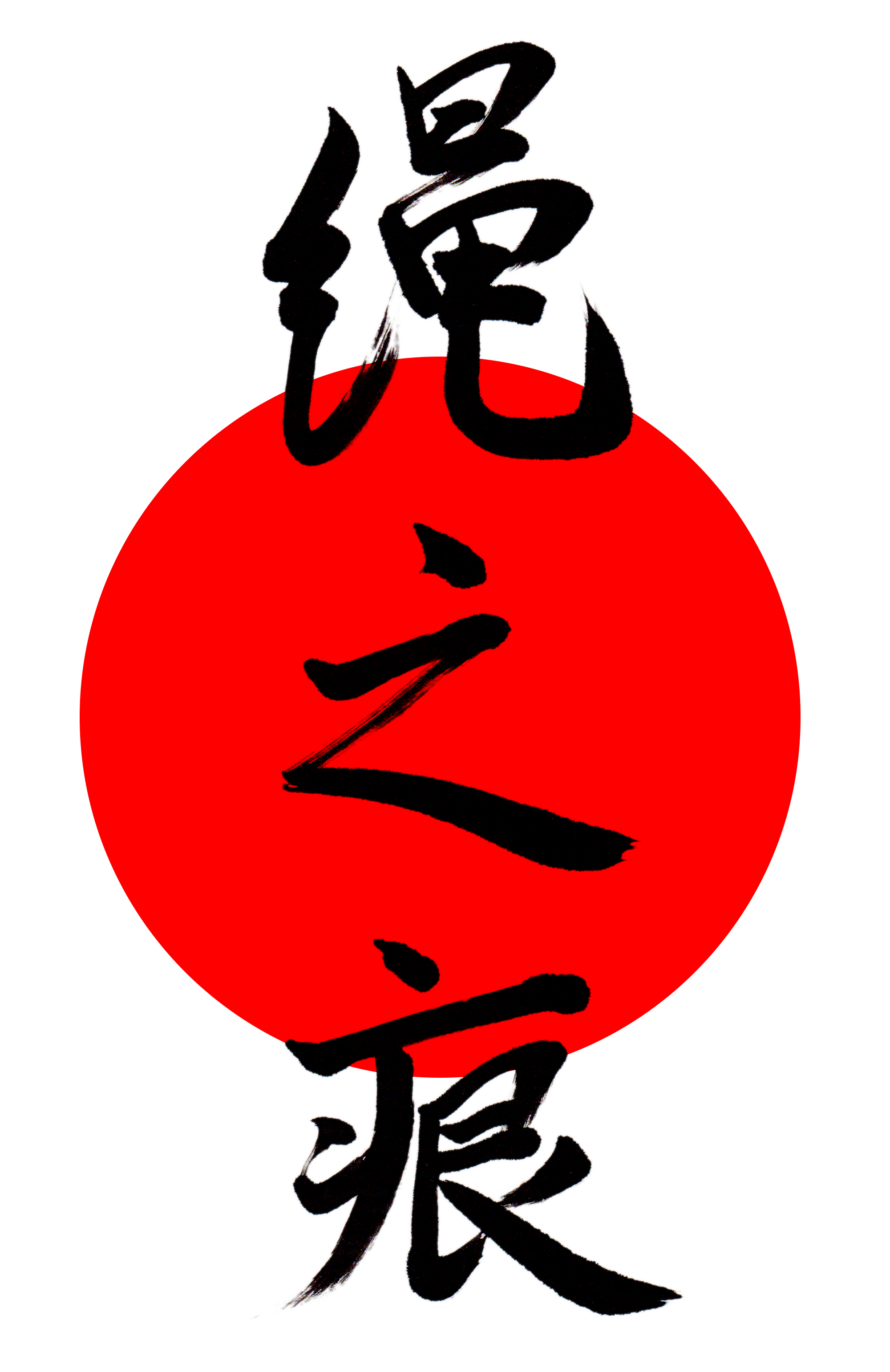Kinbaku – like any other BDSM activity – is relational at its core to me. With relational I mean that things (like kinbaku) never exist in isolation, but can only take their shape in relation to another thing, person or environment.
This consequently means that it’s not about ‘my’ desires in ‘my’ kinbaku. I am a bottom because of my rigger: they are a rigger because of me. Without each other, the kinbaku and our places in it would not exist. My rigger shapes my desires, and I in turn shape theirs. Our desires can only be acted out in the space between us that we share.
Sometimes I miss seeing this view of kinbaku. Maybe I haven’t been looking at the right places (yet). I wonder why I see discussion groups for tops and bottoms separately, but rarely groups for kinbaku partners together. It seems to be about understanding ‘me-in-rope’ rather than ‘me-in-relation-to-my-partner(s)-in-rope’.
Whereas a different version of me exists with each person, in each context and in each dynamic. Even though I have a basis of ‘my own’ preferences in kink (that obviously also need to be understood), they have appeared in varying divergent ways with different people. Some people have lightened fires in me that I didn’t know were there to be sparked.
I feel like kinkaku dynamics are not just 1 (rigger) + 1 (bottom) = 2 (rope scene), but 1 (rigger) + 1 (bottom) = 3 (rope scene + the relational sphere that creates the magic). Both people put themselves out there, and when the sphere is right, they can be in awe by the flow and beauty that transcends them as individuals.
My partner recently described kinbaku dynamics as two sides of the same coin. One of the understandings of that phrase I found fitting is: “[…] two things that superficially appear to be opposites, but are fundamentally similar” (Wiktionary). The ‘two things’ in kinbaku (the rigger and the bottom) do not oppose each other, but are cut from the same cloth.
It’s not about the dominant and the submissive. The giver and the receiver. The one in control and the one without control. Both people are equally important, and are more alike than they are different. They share their passion for the experience of kinbaku.
This is contrary to the popular belief that the rigger is the one who ‘acts’, and the bottom is the one who ‘receives’. Leaving aside that receiving is just as much of a skill (if not more) as being active is, I truly don’t know who gives and who receives in kinbaku.
We tend to say that the bottom gives a lot – their body, presence, emotions and vulnerability – and that the rigger receives this as a gift from the bottom. But I tend to think that a rigger gives just as much, albeit in a different way. A rigger gives a bottom their complete focus and attention, attunes to their body language, desire and communication style and takes on (partial) responsibility for their safety.
And both parties (should) receive a lot too. Bottoms receive a memorable experience that has touched their desires or their hearts. Riggers, in a sense, receive the same.
Maybe the most beautiful kinbaku exists when both people feel that they are the luckiest one.
RopeMarks Ryu | the Shady Lady | RopeMarks












Perfectly on point!
As an addition (or sidetrack) I believe you can’t look at kinbaku without looking at the Japanese culture. Japan is (still) considered a collectivistic country (vs the mainly individualistic Western countries). Their value lies in the collective, the group, the two (or more) people engaging in “kinbaku” not the individual.
Because of this difference, I think that any Western talk about kinbaku needs to be given a context (as you do in the Japanese language). Are we talking about kinbaku as it is done in Japan or are we talking about kinbaku as it bastardized, re-interpreted and (possibly) appropriated by Westerners?
Kinbaku, from Japan, is more inline with your values I think.
Western kinbaku to me feels as a stark contract from the “original”, is more about the individual (ego?) and the patterns (’cause these are “easy” to see and label as “kinbaku”). Wouldn’t you just call that “bondage” (using the globally accepted internet language “English”)?